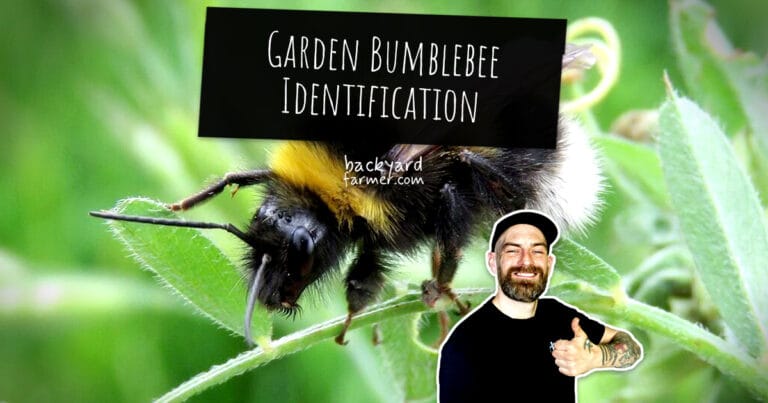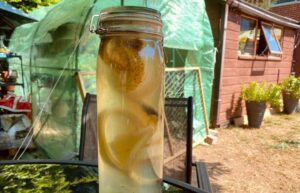Table of contents
Introduction
The Garden Bumblebee (Bombus hortorum) is one of the earliest bumblebee species to emerge each spring, making it a vital pollinator for a wide range of plants.
With its unusually long tongue, rapid movements, and bold black-and-yellow pattern, this bee is easy to spot in gardens, hedgerows, and woodlands. It plays a crucial role in our ecosystems by supporting biodiversity and fertilizing everything from wildflowers to fruit trees and crops.
Yet, like many pollinators, it faces growing threats from habitat loss and climate change. In this guide, you’ll learn how to identify the Garden Bumblebee, tell it apart from similar species, and discover practical ways to protect it.
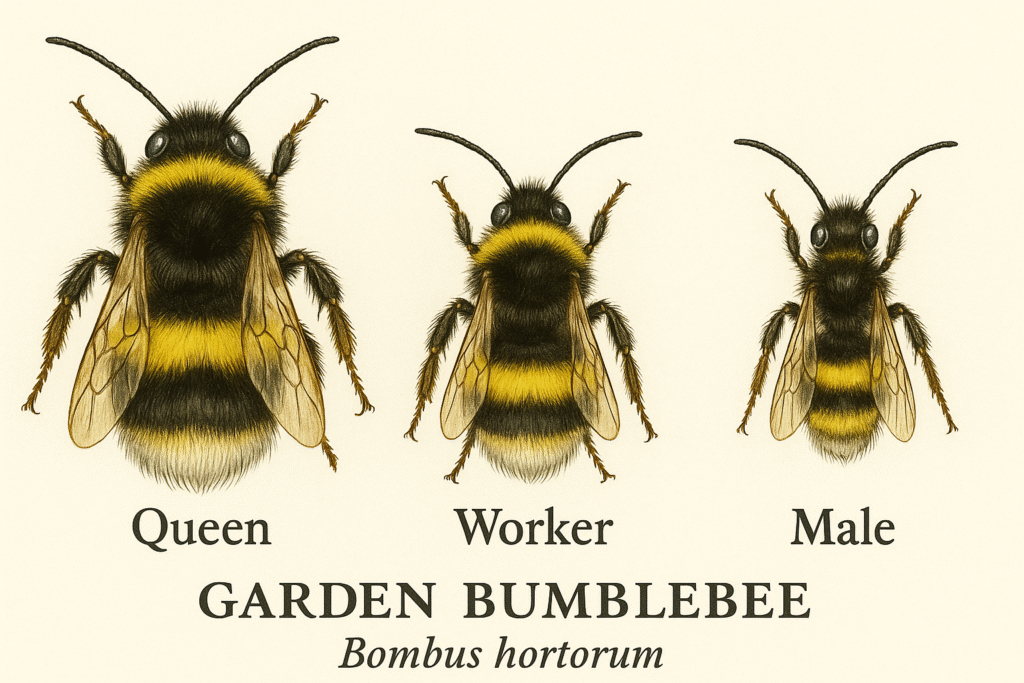
How to Identify Garden Bumblebee
The Garden Bumblebee stands out with its distinctive long face and exceptionally long tongue, which help it reach deep tubular flowers. Its slim, elongated body features black and yellow bands and a bright white tail.
Physical Characteristics
- Queen – Large and slender with striking black and yellow bands and a clean white tail
- Worker – Similar to the queen but smaller
- Male (Drone) – Slim with slightly longer antennae and a less hairy face
Identification & Key Facts
| Attribute | Details |
|---|---|
| Common Name | Garden Bumblebee |
| Latin Name | Bombus hortorum |
| Size | 14–20 mm |
| Location | Widely distributed across the UK and Europe |
| Active Months | March to October |
| Habitat | Gardens, hedgerows, woodland, and urban areas |
| Nesting Behavior | Nests above or below ground in abandoned burrows or dense vegetation |
| Social Behavior | Social, with organised colonies |
| Flora & Fauna | Favourites include foxgloves, red clover, and comfrey |
| UK Status | Stable but facing challenges from habitat loss and pesticide use |
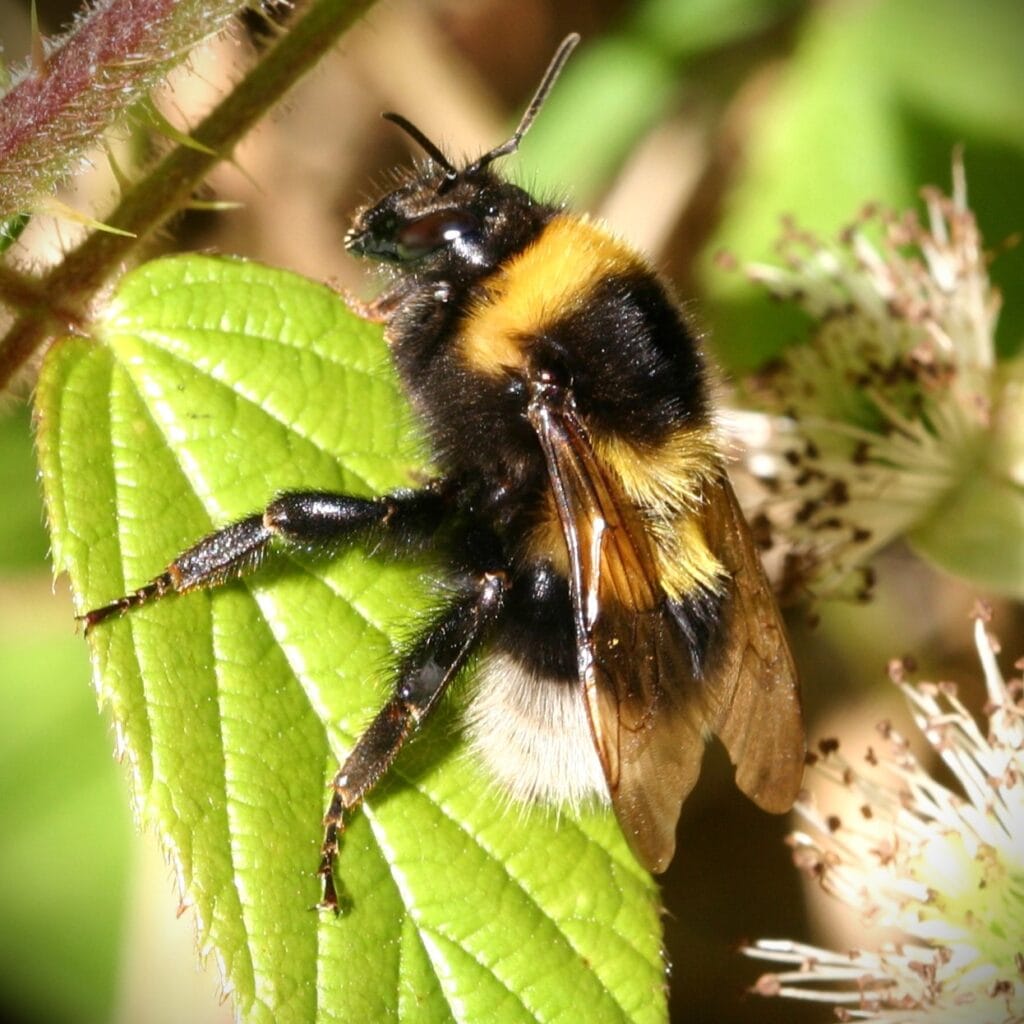
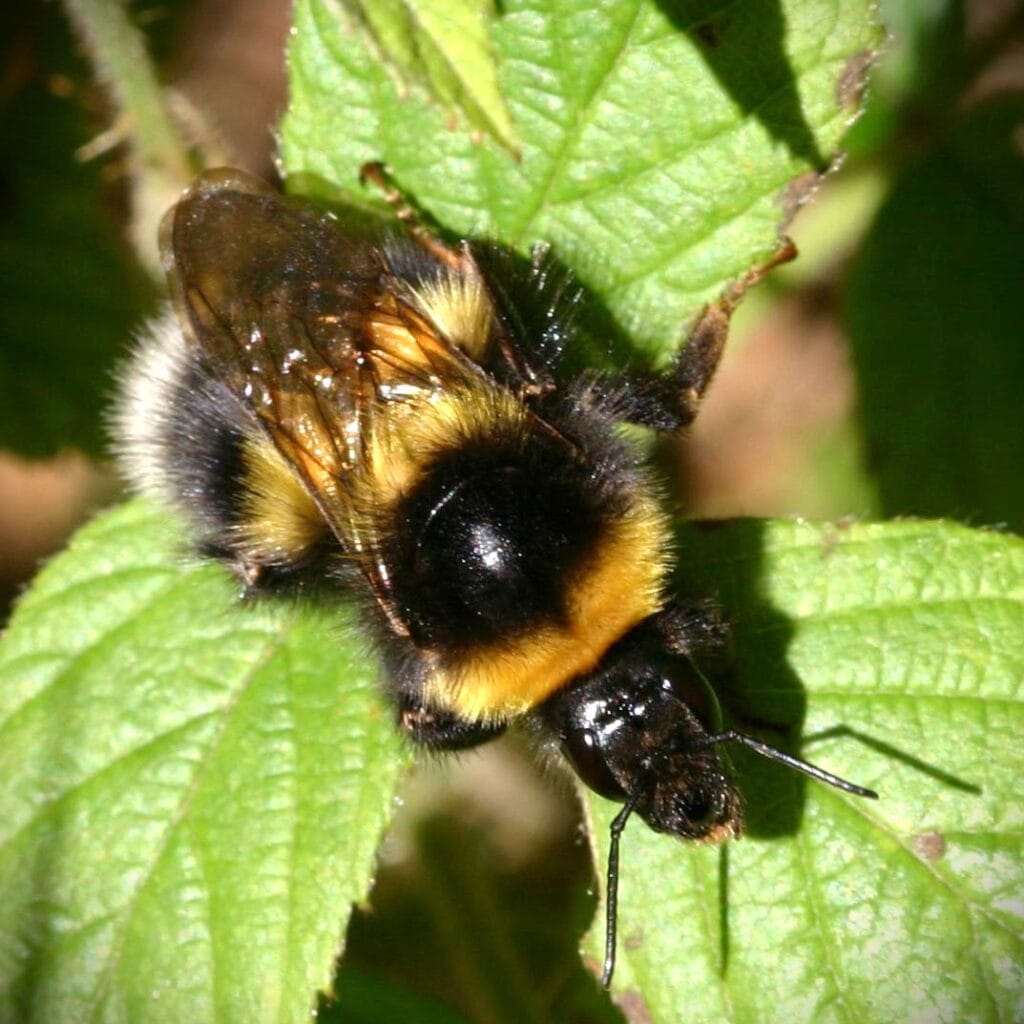
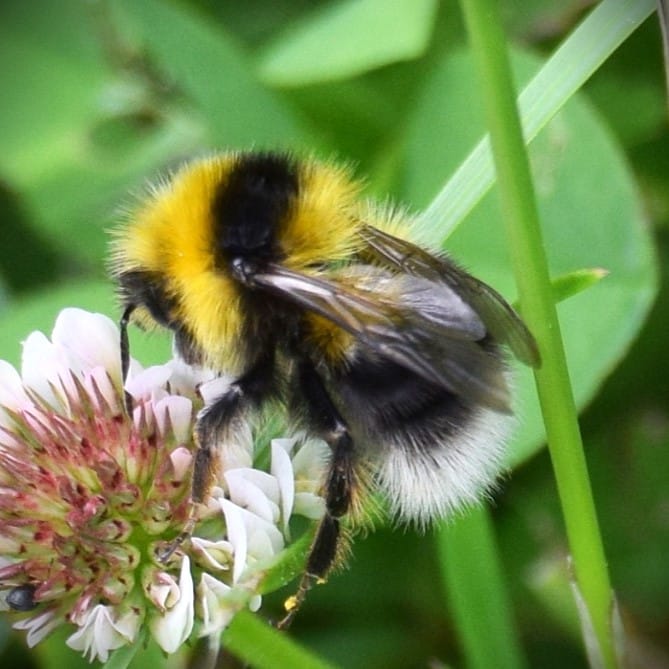
Similar Species
It’s easy to mistake the Garden Bumblebee for other species due to its coloration. However, these tips can help you tell them apart:
- White-tailed Bumblebee (Bombus lucorum) – Shorter face and tongue, stockier build
- Buff-tailed Bumblebee (Bombus terrestris) – Broader body and a buff-coloured tail
- Heath Bumblebee (Bombus jonellus) – Smaller overall and has a more rounded face
Want to improve your bee ID skills? Check out our complete UK Bee Identification Guide.
Why the Garden Bumblebee Matters
The Garden Bumblebee plays a key role in pollination, helping to maintain biodiversity and support our food systems. Because of its long tongue, it can access flowers that many other bees can’t reach. This makes it especially important for the health of both wild and cultivated plants.
However, habitat fragmentation, pesticide use, and changing climates are putting increasing pressure on its populations.
FAQ
Its long tongue lets it reach deep into tubular flowers—something most bees can’t do.
Grow native tubular flowers like foxglove, comfrey, red clover, and honeysuckle. Avoid pesticides and allow parts of your garden to stay wild.
They’re currently stable but face growing threats from habitat loss and chemical use.
Look for a long face, slim body, and a preference for deeper flowers.
They are typically very gentle and only sting if directly threatened.
How You Can Help
Supporting the Garden Bumblebee helps protect the wider ecosystem. Here are a few simple actions you can take:
Plant Bee-Friendly Flowers
Grow foxglove, comfrey, red clover, honeysuckle, lavender, and mint. These are among the best flowers for Garden Bumblebees and other UK bumblebee species.
Avoid Harmful Pesticides
Steer clear of neonicotinoids, glyphosate, and broad-spectrum insecticides that are known to harm bees.
Provide Nesting Spaces
Let parts of your garden grow wild. Create compost heaps, leave undisturbed corners, or install bee hotels to support long-tongued bees like Bombus hortorum.
By embracing bee-friendly gardening, you help the Garden Bumblebee—and countless other pollinators—thrive. Explore these WWF tips on creating a bee-friendly garden to make a difference right at home.

